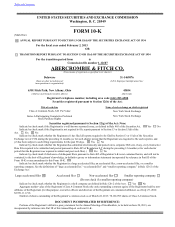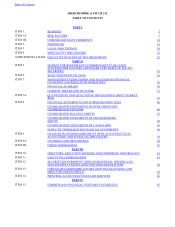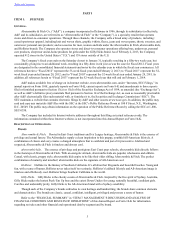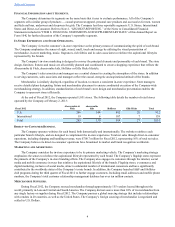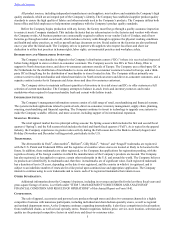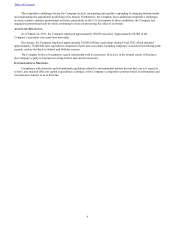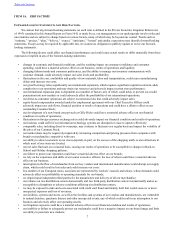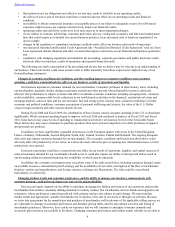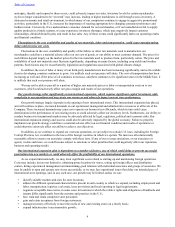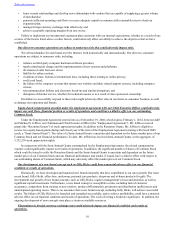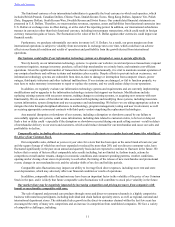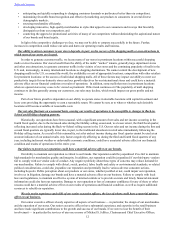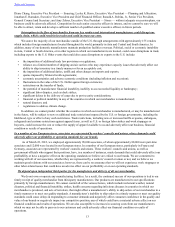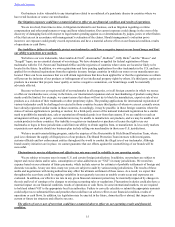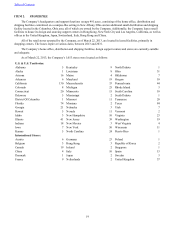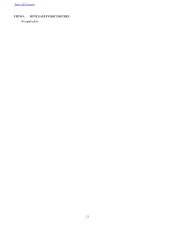Abercrombie & Fitch 2013 Annual Report Download - page 11
Download and view the complete annual report
Please find page 11 of the 2013 Abercrombie & Fitch annual report below. You can navigate through the pages in the report by either clicking on the pages listed below, or by using the keyword search tool below to find specific information within the annual report.
11
The functional currency of our international subsidiaries is generally the local currency in which each operates, which
includes British Pounds, Canadian Dollars, Chinese Yuan, Danish Kroner, Euros, Hong Kong Dollars, Japanese Yen, Polish
Zloty, Singapore Dollars, South Korean Won, Swedish Kronor and Swiss Francs. Our consolidated financial statements are
presented in U.S. Dollars. Therefore, we must translate revenues, expenses, assets and liabilities from functional currencies into
U.S. Dollars at exchange rates in effect during, or at the end of the reporting period. In addition, our international subsidiaries
transact in currencies other than their functional currency, including intercompany transactions, which could result in foreign
currency transaction gains or losses. The fluctuation in the value of the U.S. Dollar against other currencies could impact our
financial results.
Furthermore, we purchase substantially our entire inventory in U.S. Dollars. As a result, our gross margin rate from
international operations is subject to volatility from movements in exchange rates over time, which could have an adverse
effect on our financial condition and results of operations and profitability from the growth desired from international
operations.
Our business could suffer if our information technology systems are disrupted or cease to operate effectively.
We rely heavily on our information technology systems: to operate our websites; record and process transactions; respond
to customer inquiries; manage inventory; purchase, sell and ship merchandise on a timely basis; and maintain cost-efficient
operations. Given the significant number of transactions that are completed annually, it is vital to maintain constant operation of
our computer hardware and software systems and maintain cyber security. Despite efforts to prevent such an occurrence, our
information technology systems are vulnerable from time-to-time to damage or interruption from computer viruses, power
outages, third-party intrusions and other technical malfunctions. If our systems are damaged, or fail to function properly, we
may have to make monetary investments to repair or replace the systems, and we could endure delays in our operations.
In addition, we regularly evaluate our information technology systems and requirements and are currently implementing
modifications and/or upgrades to the information technology systems that support our business. Modifications include
replacing existing systems with successor systems, making changes to existing systems, or acquiring new systems with new
functionality. We are aware of the inherent risks associated with replacing and modifying these systems, including inaccurate
system information, system disruptions and user acceptance and understanding. We believe we are taking appropriate action to
mitigate the risks through disciplined adherence to methodology, program management, testing and user involvement, as well
as securing appropriate commercial contracts with third-party vendors supplying the replacement technologies.
Any material disruption or slowdown of our systems, including a disruption or slowdown caused by our failure to
successfully upgrade our systems, could cause information, including data related to customer orders, to be lost or delayed.
Such a loss or delay could - especially if the disruption or slowdown occurred during our peak selling seasons - result in delays
of merchandise delivery to our stores and customers, which could reduce demand for our merchandise and cause our sales and
profitability to decline.
Comparable sales, including direct-to-consumer, may continue to fluctuate on a regular basis and impact the volatility of
the price of our Common Stock.
Our comparable sales, defined as year-over-year sales for a store that has been open as the same brand at least one year
and the square footage of which has not been expanded or reduced by more than 20% and our direct to consumer sales, have
fluctuated significantly in the past on an annual and quarterly basis and are expected to continue to fluctuate in the future. We
believe that a variety of factors affect comparable sales results including, but not limited to, fashion trends, actions by
competitors or mall anchor tenants, changes in economic conditions and consumer spending patterns, weather conditions,
opening and/or closing of our stores in proximity to each other, the timing of the release of new merchandise and promotional
events, changes in our merchandise mix and the calendar shifts of tax free and holiday periods.
Comparable sales fluctuations may impact our ability to leverage fixed direct expenses, including store rent and store
asset depreciation, which may adversely affect our financial condition or results of operations.
In addition, comparable sales fluctuations may have been an important factor in the volatility of the price of our Common
Stock in the past, and it is likely that future comparable sales fluctuations will contribute to stock price volatility in the future.
Our market share may be negatively impacted by increasing competition and pricing pressures from companies with
brands or merchandise competitive with ours.
The sale of apparel and personal care products through stores and direct-to-consumer channels is a highly competitive
business with numerous participants, including individual and chain fashion specialty stores, as well as regional, national and
international department stores. The substantial sales growth in the direct-to-consumer channel within the last few years has
encouraged the entry of many new competitors and an increase in competition from established companies. We face a variety
of competitive challenges, including:
Table of Contents

